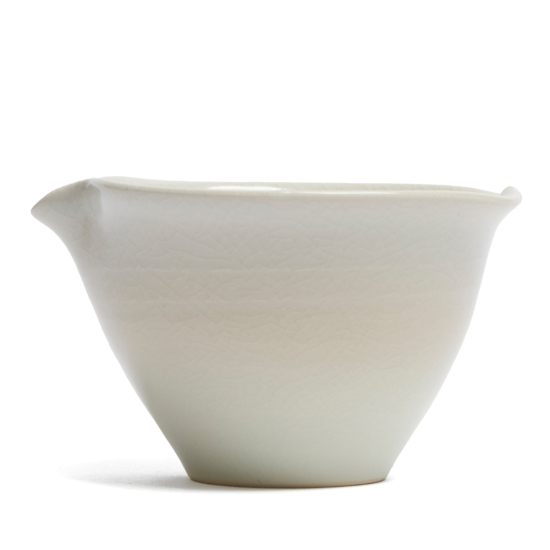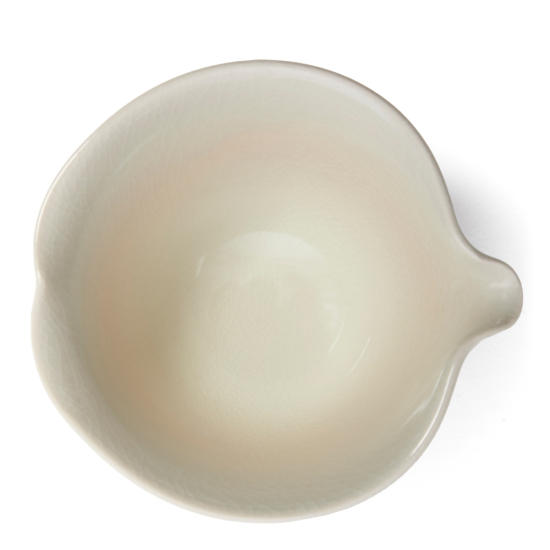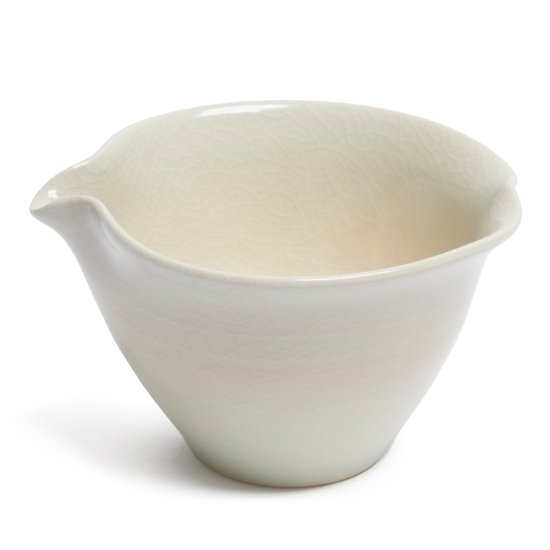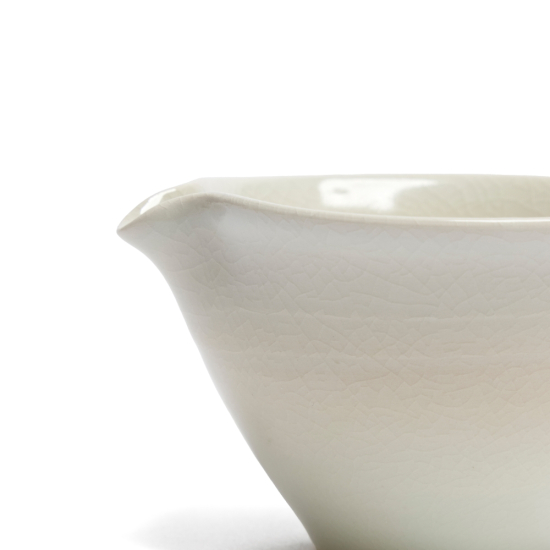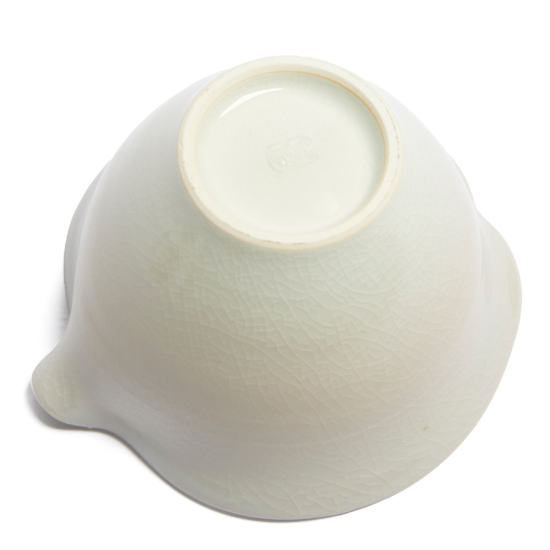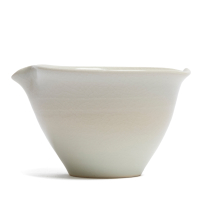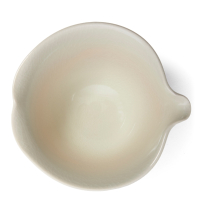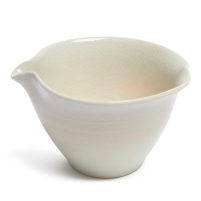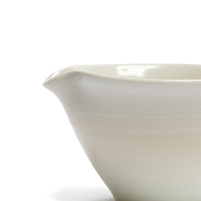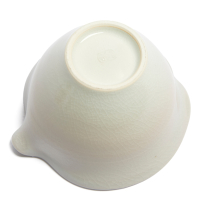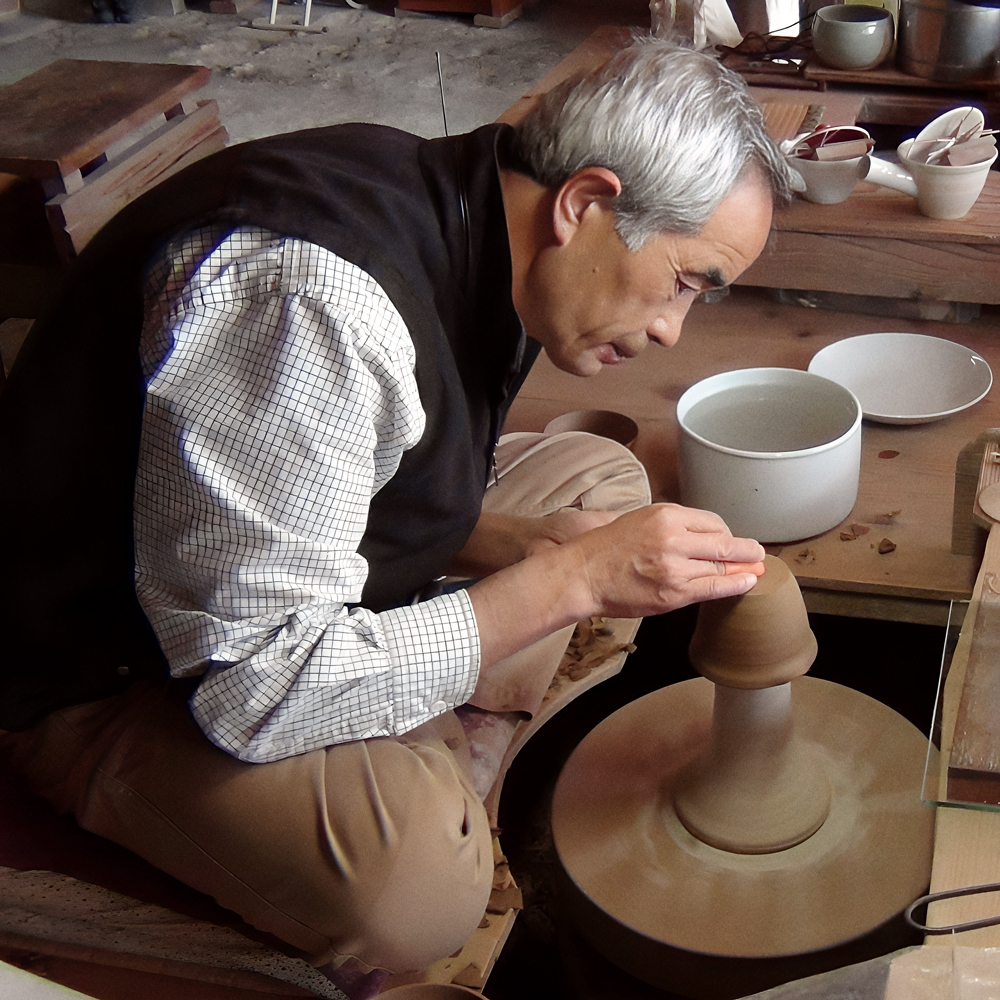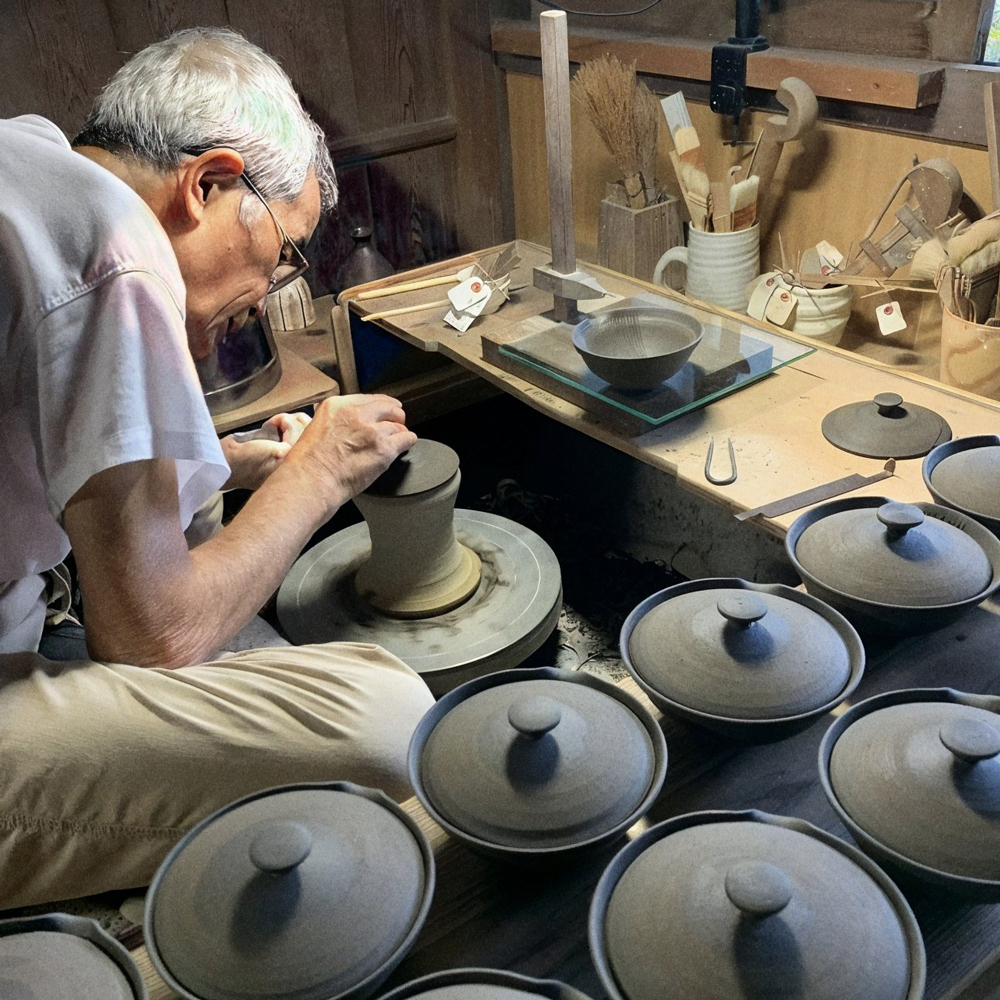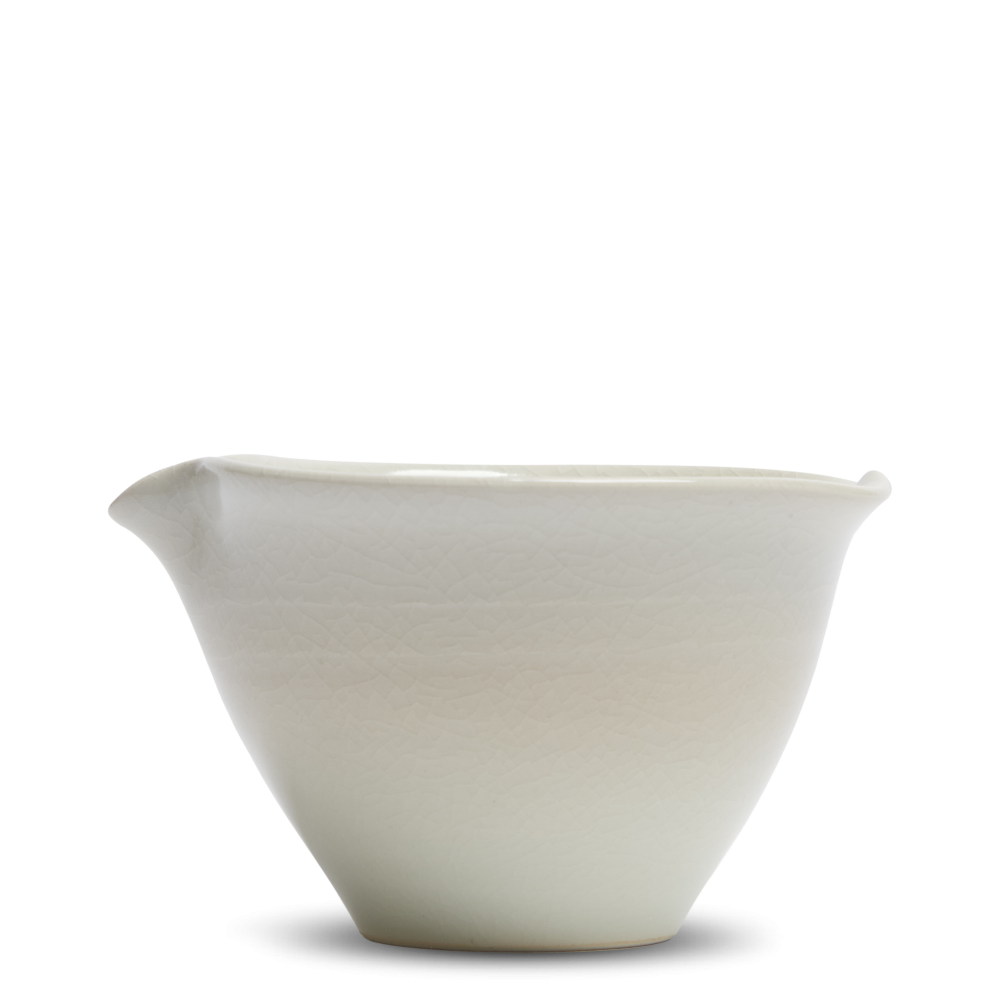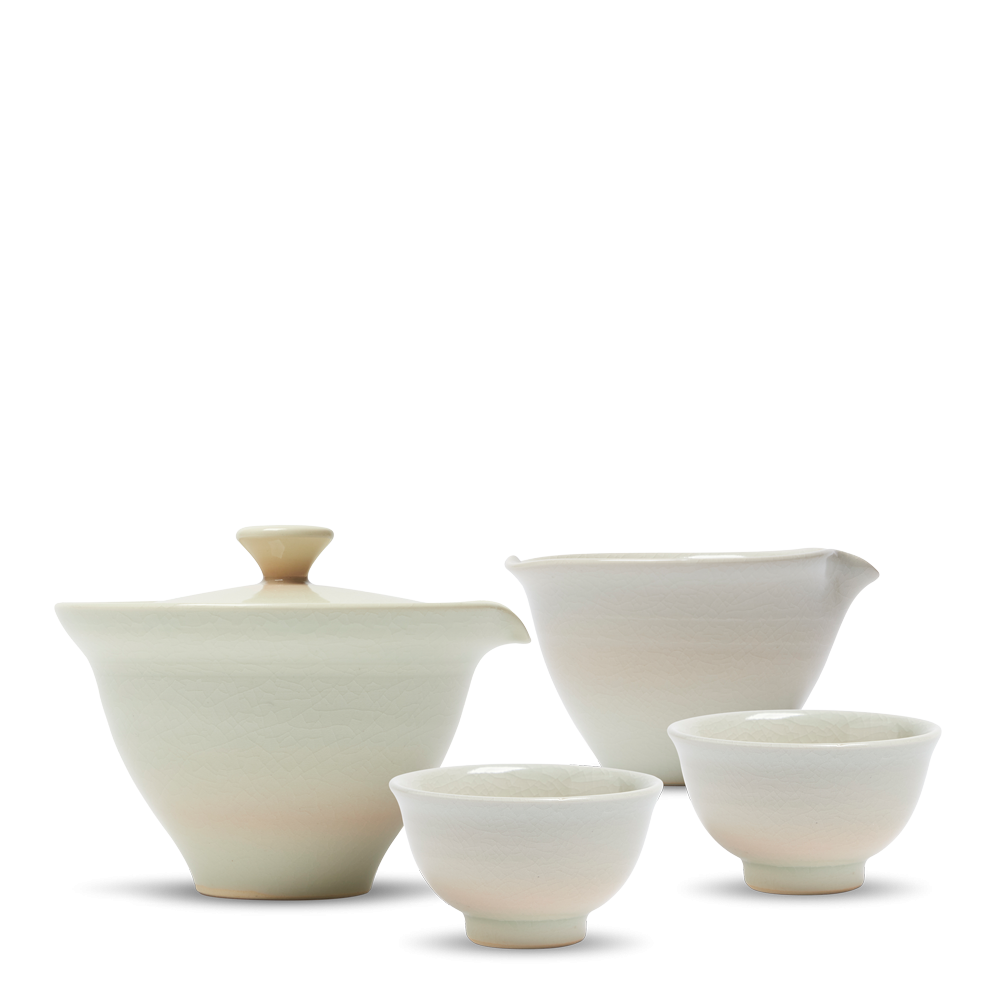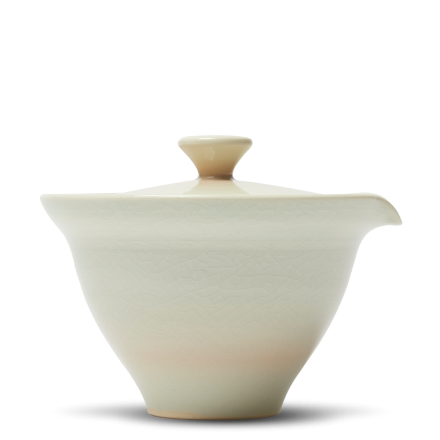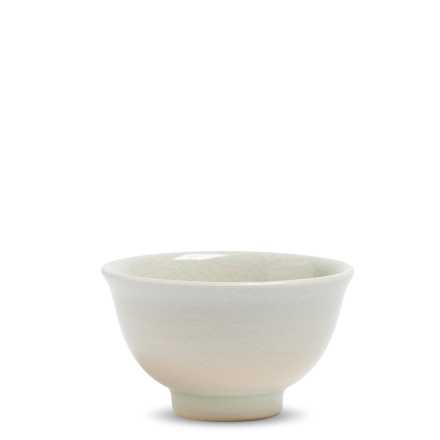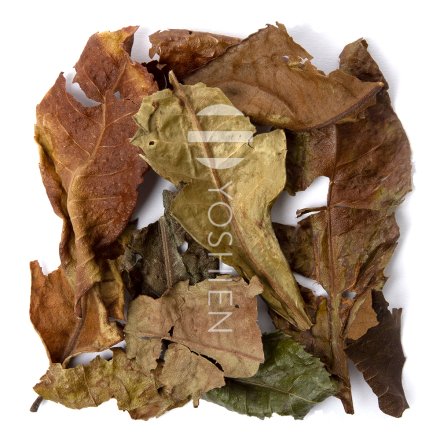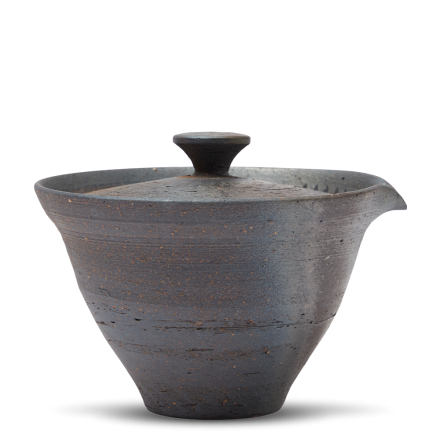Do not put in dishwasher, microwave or oven. Wash gently by hand with hot water and a soft cloth or sponge. Leave to dry naturally or with a tea towel.
Yuzamashi
Shigaraki Asamoya
Sawa Hozan
SKU
7964
An exquisite Yuzamashi cooling pitcher, handcrafted by master Shigaraki-yaki potter Sawa Hozan, featuring a glossy ombré glaze in cream with a hint of peach, evoking the soft look of morning mist, or Asamoya (朝もや) in Japanese. Enjoy the changing Keshiki "scenery" of the glaze as the craquelure becomes more pronounced with use.
| Item | Yuzamashi cooler, cream |
| Origin | Kōka, Shiga, Japan |
| Maker | Sawa Hōzan |
| Volume | 130ml |
| Dimensions | Ø9 x 6cm |
| Material | Ceramic |
| Artist mark | Seal to base |
Each piece is handmade and unique, therefore size and colour may vary slightly
In stock



